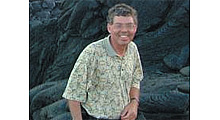
Doug Lung
The FCC has asking for public comment on a proposal by Globalstar to use part of the 2 GHz spectrum currently occupied by broadcasters for BAS. Globalstar wants to use the 2473-2495 MHz band for its Ancillary Terrestrial Component wireless service.
The NPRM Public Notice (FCC 13-147) states, “Under the proposals in this Notice, Globalstar would be able to provide low-power ATC using its licensed spectrum at 2483.5-2495 MHz under certain limited technical criteria, and with the same equipment would be able to utilize spectrum in the adjacent 2473-2483.5 MHz band pursuant to the applicable technical rules for unlicensed operations in that band.”
While noting that this could “potentially increase the amount of spectrum available for broadband access in the United States,” the NPRM warns: “At the same time, significant concerns have been raised about potential detrimental impacts on unlicensed devices. We seek comment on the costs and benefits of the proposed approach, and on changes to our rules which may facilitate such deployment and minimize any negative impacts.”
The NPRM says the FCC received comments, reply comments and ex parte comments raising concern about the Globalstar petition from the Bluetooth Special Interest Group, Consumer Electronics Association, Wi-Fi Alliance, and the Wireless Internet Service Providers Association.
A major concern is that the 2473-2483.5 MHz band is extensively used by Bluetooth devices because most Wi-Fi use is concentrated on the non-overlapping channels 1, 6 and 11. Wi-Fi interests are concerned because if Bluetooth devices can't find spectrum in the band above channel 11, there will be more Bluetooth devices coexisting with Wi-Fi devices in the lower part of the band, causing and receiving more interference. Globalstar argued that its low power network is no more unlikely to cause harmful interference to a Bluetooth device than already exists from IEEE 802.11-based Wi-Fi operations. It said Bluetooth devices and other unlicensed equipment will be able to coexist with its low-power network and continue to operate in the 2473-2483.5 MHz band. Regarding complaints about its operation adjacent to Wi-Fi channel 11, Globalstar asserted that a functional IEEE 802.11 based communications link only occupies about 18 MHz of the 22 MHz channel, providing a de facto guard band. It also said its access points and higher powered terminal devices will be equipped with high selectivity passband filters, providing additional protection.
The FCC acknowledged the filing by the Engineers for the Integrity of Broadcast Auxiliary Services Spectrum (EIBASS) raised a number of long-standing concerns related to BAS operations in the 2450-2500 MHz band. The FCC noted that there are other users in the band and that it previously determined MSS licensees could coordinate their operations to avoid causing harmful interference to existing licenses in the band. Rather than relocate broadcasters from the band, MSS licenses were required to coordinates their proposed operations to avoid causing harmful interference to BAS.
The NPRM states: “Although the Commission has previously concluded that the other services authorized to use the 2483.5-2500 MHz band could coordinate their operations to avoid causing harmful interference to BAS operations in this band, EIBASS has voiced concerns about the potential for harmful interference to BAS Channel A10 operations from Globalstar’s terrestrial low-power network operating in the 2483.5-2495 MHz band, and has reiterated an interest in 'reframing' Channels A8-A10 to resolve long-standing issues with Globalstar and other users in the 2483.5-2500 MHz band, such as BRS/EBS.”
The FCC seeks comment on Globalstar's ability to “effectively coordinate the deployment of its terrestrial low-power network with primary BAS Channel A10 operations in the 2483.5-2500 MHz band,” asking: “Are there criteria that can be used in deploying low power network access points that will be effective in avoiding interference to primary BAS operations, and, if so, what are they. Alternatively, is access-point-by-access point coordination feasible?” “We seek input on what specific procedures, rule changes or policies may be necessary to either continue to protect grandfathered BAS Channel A10 stations from harmful interference or to relocate such stations.”
For additional information and background, refer to my articles Globalstar Proposal Could Impact 2 GHz ENG Channels and Amazon Tests 2 GHz Globalstar Network.
The professional video industry's #1 source for news, trends and product and tech information. Sign up below.

Doug Lung is one of America's foremost authorities on broadcast RF technology. As vice president of Broadcast Technology for NBCUniversal Local, H. Douglas Lung leads NBC and Telemundo-owned stations’ RF and transmission affairs, including microwave, radars, satellite uplinks, and FCC technical filings. Beginning his career in 1976 at KSCI in Los Angeles, Lung has nearly 50 years of experience in broadcast television engineering. Beginning in 1985, he led the engineering department for what was to become the Telemundo network and station group, assisting in the design, construction and installation of the company’s broadcast and cable facilities. Other projects include work on the launch of Hawaii’s first UHF TV station, the rollout and testing of the ATSC mobile-handheld standard, and software development related to the incentive auction TV spectrum repack. A longtime columnist for TV Technology, Doug is also a regular contributor to IEEE Broadcast Technology. He is the recipient of the 2023 NAB Television Engineering Award. He also received a Tech Leadership Award from TV Tech publisher Future plc in 2021 and is a member of the IEEE Broadcast Technology Society and the Society of Broadcast Engineers.
